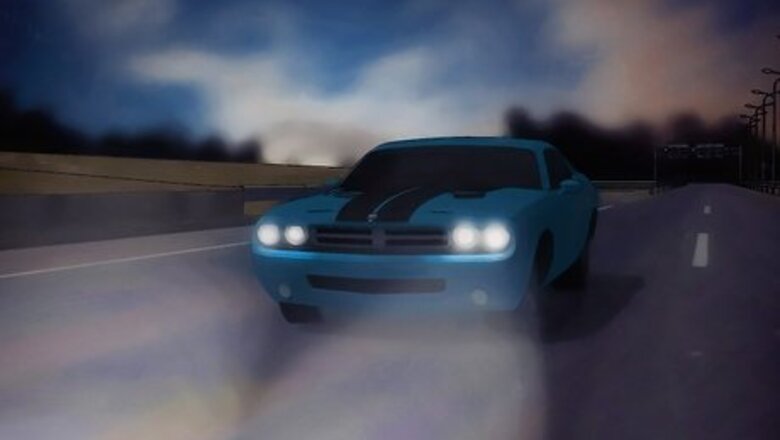
views
Using Safe Driving Practices
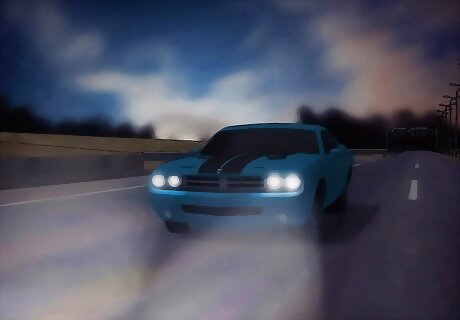
When in doubt, turn your lights on. As night slowly begins to fall over a city's streets and highways, there is almost always an hour or two during which some cars will have their headlights on and others will not. As a general rule, if you notice the day becoming darker (even just slightly), it's a smart idea to flip your headlights on. Though you may not need your headlights to see the road during these times, other drivers may have an easier time seeing you with your headlights on (especially if the setting sun is behind you, obscuring the view of oncoming traffic). Additionally, it's important to note that in many jurisdictions, driving without your headlights on in the evening or morning can be against the law. For instance, in California, headlights must be on from one-half hour before sunset to one-half hour after sunrise (and during any other low-visibility conditions).
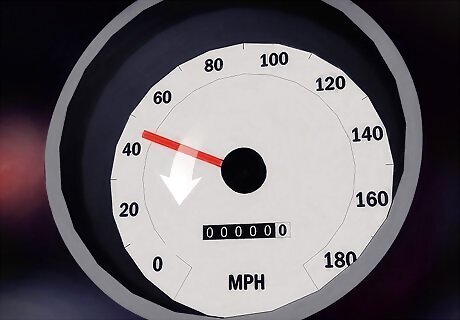
Slow down. As a general rule, night driving requires slower speeds than daytime driving. Because visibility is much lower at nighttime than during the day (even on well-lit urban roads), it takes longer to see and react to traffic hazards, pedestrians, and other obstacles. Since you can't control the types of hazards you'll encounter on your drive but you can control your driving, your smartest move is simply to drive slower, giving yourself more time to react to any problems you come across. You'll never want to "out-drive" your headlights — that is, to drive so fast that you can't stop within the distance illuminated by your headlights in front of you. A good rule of thumb for night driving is: "The posted speed limit is the highest speed that's legal — not the highest speed that's safe." Don't be afraid to go slower than the posted speed limit if you can't see very far in front of you, especially if you're rounding a corner or going over a hilltop, where your visibility is further obscured. Allow other drivers to pass you as needed.
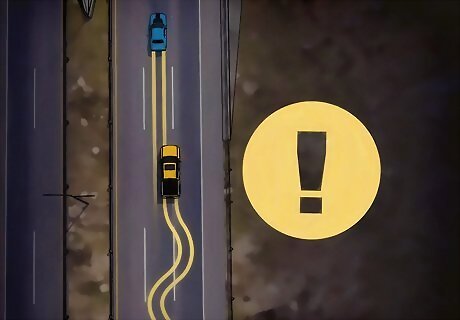
Be wary of drunk and tired drivers. Statistically, there are almost always more drunk and overtired drivers on the road at night than there are during the day. This can have deadly consequences — for instance, in 2011, drunk driving contributed to more than four times as many accidents at night as it did during the day. Both of these conditions can dramatically lower a driver's reaction speed and lead to reckless behavior, so keep an eye out for erratic drivers on the road and give them a wide berth. Keep in mind that weekend nights (Friday and Saturday) usually have more drunk drivers than ordinary weeknights because many people choose to start their weekend with a drink or two. Holidays can be especially bad. For instance, some analysis has shown that the early hours of January 1st can be the deadliest time of the year for drunk driving accidents.
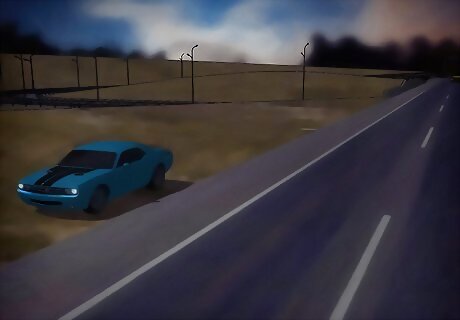
Take frequent breaks to fight fatigue. Just as you'll want to keep an eye out for other motorists who may be impaired by fatigue, you'll also want to make sure to keep your own fatigue in check. Being fatigued on the road can have many of the same risks as being drunk, including decreased awareness, slower reaction times, frequent "spacing out," weaving in and out of the lane, and so on. To fight these problems, be sure to stop frequently, giving yourself a chance to exercise, have some food and/or caffeine, and re-focus before getting back on the road. If you're too tired to drive safely — for instance, if you're having trouble keeping your eyes open — pull over or find a rest stop and get some sleep. It's much better to be safe than sorry and the life-threatening risks of falling asleep at the wheel for just a few seconds are much more important than the inconvenience of being late to your destination.

Watch for animals, especially in rural areas. Animals crossing the road can be especially dangerous at night. It can be very difficult to see animals ahead of you on poorly-lit roads when driving at high speeds and crashes involving large animals like deer can be deadly or cause major damage (for the driver, animal, and car). Stay vigilant when you're in places where deer or other animals are likely to cross the road (like rural areas). Pay attention to any animal crossing signs posted near the road and lower your speed appropriately. Additionally, be aware that most deer-related accidents occur in the late fall and early winter (though they can happen year-round). If you see an animal ahead of you, the smartest move is usually not to swerve. While it may be your first instinct, swerving is actually the leading cause of injuries and fatalities from deer-related accidents. Instead, lower your speed as much as you can by pressing the brakes and allow your car to hit the animal. One useful trick for spotting animals ahead of you is to look for their retinas. While it's usually difficult or impossible to see an animal's body before it comes into the range of your headlights, you can often see the light reflected in its eyes from much farther away. If you see two closely-spaced glowing dots in the darkness up ahead, slow down!
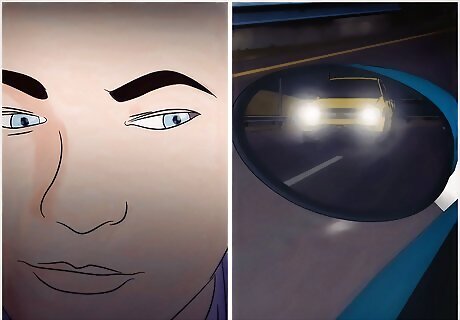
Keep your eyes moving. "Spacing out" can be a big problem for nighttime drivers. To stay focused, try to keep your eyes moving while you drive. Constantly scan the road ahead of you for potential hazards. Glance to the sides of the road and check your mirrors occasionally to remain aware of your surroundings. Resist the urge to simply focus on the dividing line in the middle of the road — this doesn't give you much important visual information and can "hypnotize" you into a state of reduced awareness. The relatively quiet, calm atmosphere of most night driving and the uniformity of dark or pitch-black surroundings can combine to put night drivers into a dangerous trance-like state. Even if a driver doesn't outright fall asleep, this distracted state, which can cause lower reaction times, forgetfulness, and other dangerous problems, can be very unsafe. Always stay alert and vigilant — your life and the lives of other motorists may depend on it.
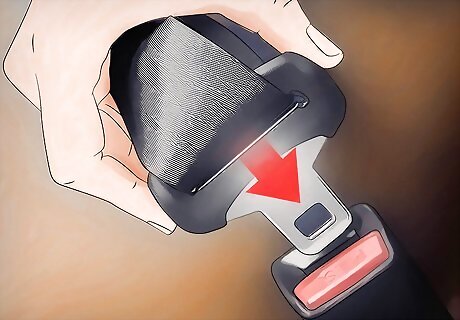
Take all normal daytime driving precautions. It may seem obvious, but it definitely bears mentioning that all of the safety precautions you take during the day are especially important at night. Make sure to buckle up, adjust your seat and mirrors, put away your cell phone, and focus on driving while you're behind the wheel. These simple, everyday precautions make driving safer and accidents less likely, day or night.
Improving Visibility
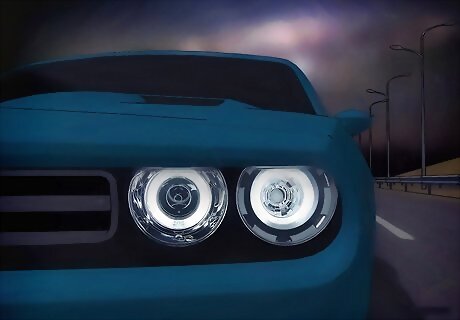
Keep your headlights, mirrors, and windshield in top condition. Your headlights are your most important lifeline when driving at night. If they're not in good working condition, you're essentially increasing your risk of an accident for nothing. Keep your headlights clean by washing them every few weeks — this should keep their brightness and clarity high. If a headlight burns out, replace it as soon as you can during the day and avoid driving at night until you can do so. Note that it is often illegal to drive without proper working headlights. In addition, for top visibility, you'll want to keep your windshield, windows, and mirror as clear and clean as you can. Avoid using your hand to wipe these important parts of your car — the natural oils of your skin can leave obscuring smudges. Instead, use a newspaper or microfiber towel.
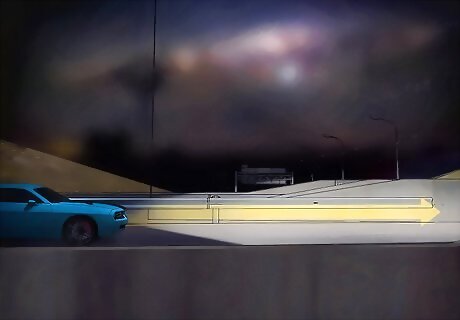
Use your high-beams for low-light situations. Your car's high-beam lights can seriously boost your safety while driving at night, but only if you use them correctly. High-beams should be used when driving in very dark, low-visibility areas where there is not much traffic. In these cases, high-beams can make your field of vision much wider and deeper, so use them as needed. Be sure to turn off your high-beams when following another car or there is oncoming traffic. In these cases, the bright light of the high-beams can distract other drivers, making it harder for them to drive safely. If you're rounding a corner or going over a hilltop and you start to see the faint glow of another car's headlights from around the bend, turn your high-beams off in advance so that the other driver isn't suddenly blinded.
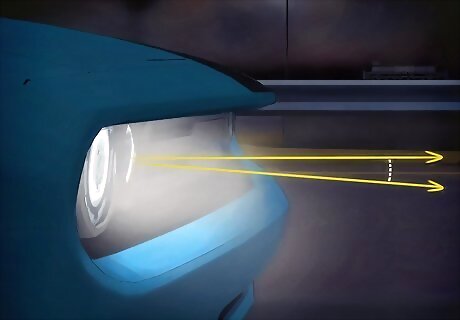
Consider adjusting your headlights. Sometimes, a car's headlights are angled lower to the ground than is necessary or aren't aligned perfectly symmetrically. The brightest headlights in the world aren't useful if they're not properly angled to illuminate as much of the road in front of you as possible, so if you're having a hard time seeing ahead while driving at night, you may want to consider having your headlights re-adjusted. At a professional mechanic's shop, this procedure is usually quite quick and cheap. It's also possible to adjust your headlights yourself. Since every car is different, if you want to do this, be sure to follow the instructions in your car's owner's manual. Be patient — it can take some time to get a set of headlights aligned perfectly.
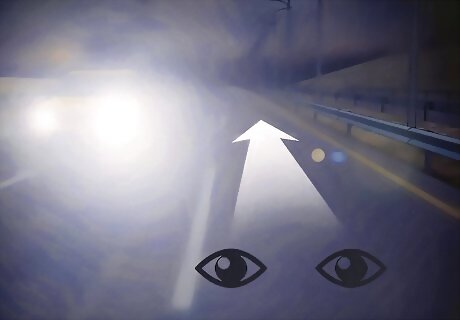
Deal with others' high-beams by glancing to the side of the road. In a perfect world, other drivers would always dim their high-beams when they see you, just as you would for them. Unfortunately, drivers don't always remember to do this. If an oncoming car has its high-beams on, avoid looking at them, as their bright light can momentarily blind you. Instead, glance to the right hand side of your lane (or, in countries that drive on the left side of the road, the left) while keeping your peripheral vision alert to hazards. This keeps you as alert of the hazards around you as possible while preserving your vision. If a car behind you is using its high-beams, try adjusting your rear view mirror to keep the light out of your eyes. You can even move the mirror to shine the light back at the driver and alert him to his mistake.
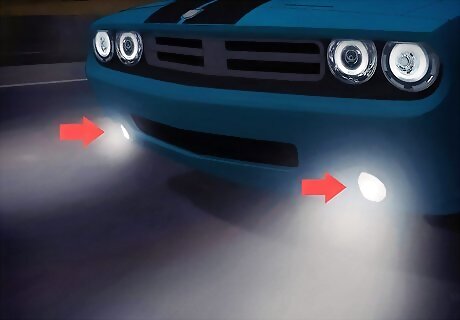
Consider adding low-to-the-ground fog lights. If you anticipate doing lots of driving at night and in foggy conditions, you may want to consider investing in a set of after-market fog lights. Often, these lights are mounted low on the front bumper to illuminate as much of the road ahead as possible (fog often is thinnest in the foot or so just above the road). However, not all after-market lights are created equal, so talk to an automotive expert before making this purchase. Never use your car's default high-beams in the fog. The reflective water particles that make up fog can shine the bright light back at you, obscuring your vision of the road more than if you had used no lights at all.
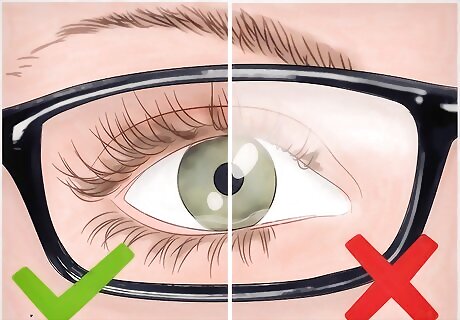
If you wear glasses, use an anti-reflective coating. Other cars' headlights (and especially high-beams) can pose unique challenges to drivers with glasses. Glasses can sometimes reflect oncoming lights in ways that create an obscuring glare for the wearer. To avoid this, try wearing contacts or buying a set of glasses that use an anti-reflective coating, which should minimize these effects. If you do buy a specialty pair of glasses, keep them in your car so that they'll be available to you whenever you go driving.
Enjoying a Night Drive
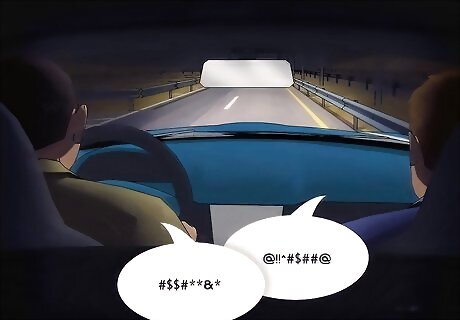
Stay awake by talking to a passenger. Once you've mastered the fundamentals of safe night driving, the experience can actually be a fun, relaxing one, especially if you make the most of entertaining opportunities that also help you drive safely. For instance, if you have a passenger in the car with you while you're driving at night, you may want to partially engage yourself in a light conversation with him or her. Talking to other people is a great way to stave off driving fatigue, and the calm, pitch-black surroundings can often encourage surprisingly intimate conversations. Be sure, however, not to engage yourself too heavily in the conversation. Getting into a heated argument, for example, can distract you from the most important task at hand — driving safely.
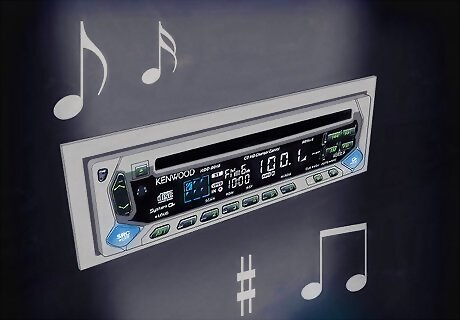
Listen to night-driving tunes. Driving at night can be a fantastic time to listen to your favorite music on your car's stereo. The relative quiet and calm of night driving makes it easier to hear a song's minor details, making good music especially enjoyable. Some people prefer to listen to slick disco or electronica cuts at night, while others appreciate the thrill of hard rock tracks. There's no "right" type of music to listen to at night — it's up to you! Below are just a few great night driving tracks from several different genres (there are many, many more): Kavinsky - "Nightcall" Chromatics - "Back From the Grave" DJ Shadow - "Midnight in a Perfect World" Kyuss - "Gardenia" Allan Kingdom - "Evergreens" Golden Earring - "Radar love" Dave Dee, Dozy, Beaky, Mick, and Tich - "Hold Tight" Quiet Riot - "Party All Night" Daft Punk - "Contact" Charles Mingus - "Moanin'"
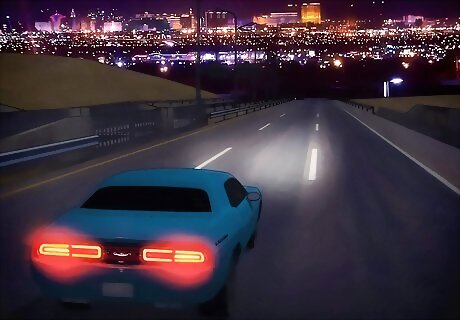
Visit late-night attractions. Driving at night can sometimes be a way to come into contact with people and things that you wouldn't otherwise see! For instance, most major city centers truly "come to life" at night and bustle with unique characters enjoying the night life. Even rural areas can have their share of unique late-night "flavor". Every stretch of road is different, so keep your eyes peeled for attractions as you drive — if you're taking lots of breaks to fight night-driving fatigue, you should have ample opportunities to stop. Below are just a few things you may want to look out for: Late-night diners/hang-outs Bars and nightclubs (note: avoid drinking and driving, especially at night) Truck stops/rest areas Scenic paths and overlooks Camp grounds Drive-in attractions (theaters, restaurants, etc.)
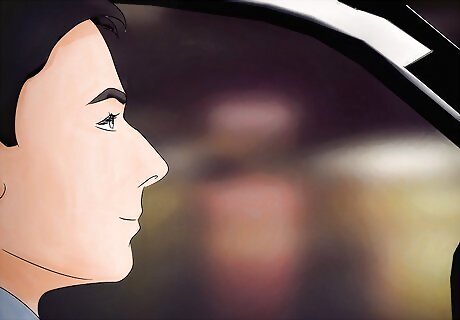
Enjoy the calm (responsibly). Driving at night can be an experience like no other. With the calm, steady hum of the engine and the darkness of your surroundings, driving can be almost like flying through space. Driving at night feels mysterious, fun, and even exciting — for some people, it's one of life's simplest yet most addictive joys. It's perfectly fine to enjoy a good night drive, but don't forget to focus on what's most important of all — your safety and the safety of other drivers. Always remember that getting distracted while driving can be deadly (especially at night), so keep your attention on the road. If you're confident in your safe driving habits, you'll be able to responsibly relax, tune in, and enjoy your ride!











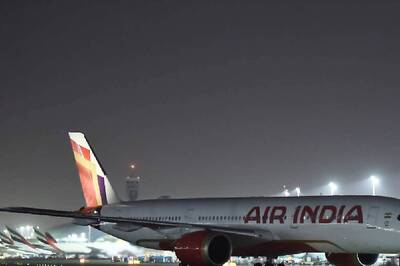
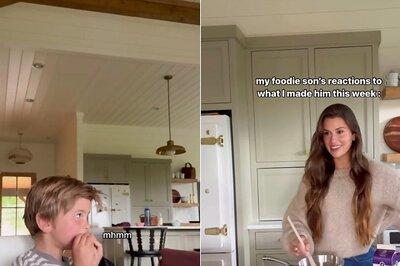




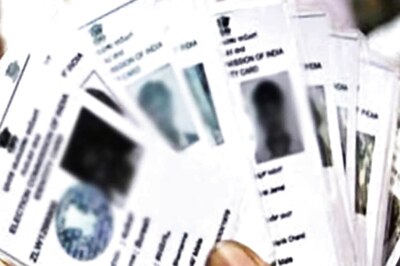

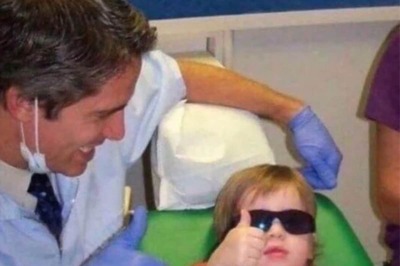
Comments
0 comment